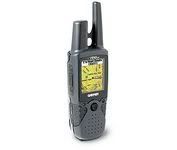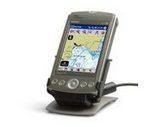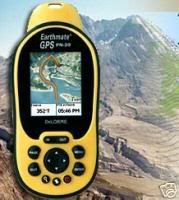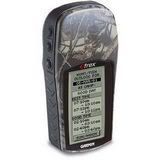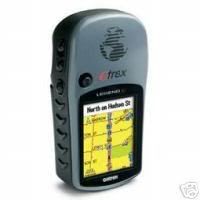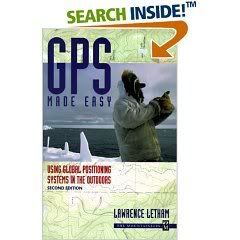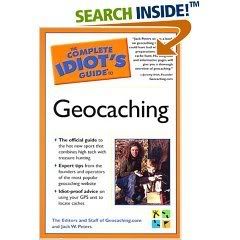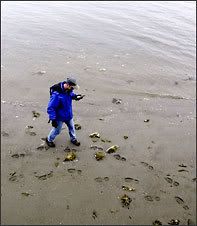Cache Listing Requirements/Guidelines
============================================
Guidelines last updated February 21, 2007
------------------------------------------------
These are listing guidelines only.
Before a cache is published on the website, a volunteer will review the page for inaccuracies, bad coordinates, and compliance with these guidelines. The physical cache site is not verified. As the cache owner, you are responsible for the placement and care of your cache.
Prior to placing and submitting a cache you are expected to review the following guidelines. I
n order to post a new cache and submit it for review you must indicate that you have read the guidelines as required.
Geocaching is a constantly changing and evolving sport, and as a result these guidelines are subject to change as the sport progresses.
Please refer back to these guidelines prior to cache placement to ensure that no changes have been implemented that would adversely affect your planned cache placement.
First and foremost please be advised there is no precedent for placing caches.
This means that the past listing of a similar cache in and of itself is not a valid justification for the listing of a new cache.
If a cache has been published and violates any guidelines listed below, you are encouraged to report it.
However, if the cache was placed prior to the date when a guideline was issued or updated the cache is likely to be “grandfathered” and allowed to stand as is.
If you believe that your cache may be questionable, you are encouraged to add a note to the cache page.
For example, you could add an explanation in the “notes to reviewer” section such as: "The train tracks running through this park are inactive and have been converted to a rails-to-trails path."
The reviewer will read the note and take the information into consideration.
Rest assured that notes to reviewers will be removed before the caches are published. Most caches that are temporarily put on hold or archived are done so due to a lack of information.
Having all the relevant information up front during the review process will help ensure a speedy listing.
If your cache has been placed on hold, temporarily disabled or archived…
---------------------------------------------------------------------------------
First please read the reviewer notes for an explanation.
It is a common practice for the reviewers to place a cache on hold while they obtain additional details required for it to be published.
A reviewer may temporarily disable a submission to provide time for the cache owner to make necessary changes to the cache placement or cache description.
This doesn't necessarily mean that it won't be published.
In order to ensure a prompt response when responding to a reviewer, please follow the contact instructions given by the reviewer in their note.
If no other instructions are provided, click on the volunteer reviewer's profile from the cache page and e-mail the reviewer through Geocaching.com.
If you reply directly to the automated cache notification address, most likely you will not receive a reply.
If your cache has been archived and you wish to appeal the decision, first contact the reviewer and explain why you feel your cache meets the guidelines.
Exceptions may sometimes be made, depending on the nature of a cache.
If you have a novel type of cache that “pushes the envelope” to some degree, then it is best to contact your local reviewer and/or Groundspeak before placing and reporting it on the Geocaching.com web site.
The guidelines should address most situations, but Groundspeak administrators and reviewers are always interested in new ideas.
If, after exchanging emails with the reviewer, you still feel your cache has been misjudged, your next option is to ask the volunteer to post the cache for all of the reviewers to see in their private discussion forum.
Sometimes a second opinion from someone else who has seen a similar situation can help in suggesting a way for the cache to be published.
Next, you should feel free to post a message in the “Geocaching Topics” section of the Groundspeak Forums to see what the geocaching community thinks.
If the majority believes that it should be published, then Groundspeak administrators and volunteers may review the submission and your cache may be unarchived.
Finally, if you believe that the reviewer has acted inappropriately, you may send an e-mail with complete details, waypoint name (GC****) and a link to the cache, to Groundspeak's special address for this purpose: appeals@geocaching.com.
For all other purposes, whenever these Guidelines ask the cache owner to “contact Groundspeak,” use the contact@geocaching.com e-mail address.
Table of Contents
-----------------------------------
Off-limit (physical) caches
Cache Types
Cache Sizes
Traditional Caches
Multi-Caches
Mystery or Puzzle Caches
Letterbox Hybrid
Earthcaches
Event Caches
Mega-Event Caches
CITO Event Caches
Guidelines that apply to all cache types
---------------------------------------------
Cache Maintenance
Cache Permanence
Cache Saturation
Cache Contents
Commercial Caches
Caches that Solicit
Grandfathered Cache Types
Virtual Caches
Webcams
Guidelines that apply to grandfathered cache types
Virtual Cache and Webcam Cache Maintenance Guidelines
Virtual Cache Logging Guidelines
Webcam Cache Logging Guidelines
Off-limit (Physical) Caches
------------------------------------------------
By submitting a cache listing, you assure us that you have adequate permission to hide your cache in the selected location.
However, if we see a cache description that mentions ignoring "No Trespassing" signs (or any other obvious issues), your listing may be immediately archived.
We also assume that your cache placement complies with all applicable laws.
If an obvious legal issue is present, or is brought to our attention, your listing may be immediately archived.
Caches may be quickly archived if we see the following (which is not inclusive):
* Caches on land managed by an agency that prohibits geocaches, such as the U.S. National Park Service or U.S. Fish and Wildlife Service (National Wildlife Refuges)
* Caches that are buried. If a shovel, trowel or other “pointy” object is used to dig, whether in order to hide or to find the cache, then it is not appropriate.
* Caches that deface public or private property, whether a natural or man-made object, in order to provide a hiding place, a clue or a logging method.
* Caches placed in areas which are highly sensitive to the extra traffic that would be caused by vehicles and humans (examples may include archaeological or historic sites).
* Caches hidden in close proximity to active railroad tracks. In general we use a distance of 150 ft (46 m) but your local area's trespassing laws may be different. All local laws apply.
* Caches near or on military installations.
* Caches near, on or under public structures deemed potential or possible targets for terrorist attacks. These may include but are not limited to highway bridges, dams, government buildings, elementary and secondary schools, and airports.
There may be some exceptions.
If your cache fits within one of the above areas, please explain this in a note to the reviewer.
If you are given permission to place a cache on private property, indicate this on the cache page for the benefit of both the reviewer and people seeking out the cache.
In addition, there may be local regulations already in place for certain types of parks in your region (state parks, county preserves, etc.).
There are many local caching organizations that would be able to help you out with those regulations.
If your area does not have a local caching organization please contact your local reviewer for information on regulations.
If you have complied with special regulations by obtaining a permit, please state this on your cache page or in a 'note to the reviewer'.
A reviewer may request that you provide contact information for the person who gave you permission to hide your cache.
If the Geocaching.com web site is contacted and informed that your cache has been placed inappropriately, your cache may be archived or disabled and you may be contacted with any information provided by the individual or organization who contacted us.
Cache Types
-------------------
Cache Sizes
Cache sizes for all caches that have a physical container.
* Micro (35 mm film canister or smaller – less than approximately 3 ounces or .1 litres -- typically containing only a logbook)
* Small (Sandwich-sized Tupperware-style container or similar -- less than approximately 1 quart or litre -- holds trade items as well as a logbook)
* Regular (Tupperware-style container or ammo can)
* Large (5 gallon/20 litre bucket or larger)
Traditional Caches
-------------------------
This is the original cache type consisting of (at a bare minimum) a container and a logbook.
The cache may be filled with objects for trade.
Normally you'll find a Tupperware-style container, ammo box, or bucket filled with goodies, or smaller container ("microcache") too small to contain items except for a logbook.
The coordinates listed on the traditional cache page are the exact location of the cache.
A container with just an object or codeword for verification, and no logbook, generally, does not qualify as a traditional cache.
Caches that require the geocacher to do something beyond finding the container and signing the logbook generally do not qualify as traditional caches.
Multi-Caches
----------------------
There are many variations to multi-stage caches.
The most common is that in which the first container or waypoint contains or provides coordinates to the next location.
Another popular variant is a series of multiple waypoints, each of which provide partial coordinates for the final cache's position.
Please provide the coordinates of all stages of the multicache.
The posted coordinates are for the first stage.
Use the “Additional Waypoints” feature when submitting the multi-cache coordinates for the other stages.
If you don't want the coordinates for the rest of the stages displayed, be sure to mark them as “hidden”.
Doing this will hide the coordinates from view by anyone except the owner and website volunteers.
Offset caches are a variation on multi-caches.
They are listed as a multi-cache when selecting a cache type.
They are not found by simply going to some coordinates and finding a cache there.
With the offset cache the published coordinates could be of an existing historical monument, plaque, or even a benchmark that you would like to have your cache hunter visit.
At this spot, the hunter looks for numbers or information already appearing on the marker or on some part of the marker or site (geocachers NEVER deface public or private property).
The geocacher is then able to manipulate these numbers or information using instructions posted on the cache page to continue the hunt.
Mystery or Puzzle Caches
-----------------------------
The “catch-all” of cache types, this form of cache often involves complicated puzzles that you will first need to solve in order to determine the coordinates.
The information needed to solve the puzzle must be available to the general caching community and the puzzle should be solvable from the information provided on the cache page.
For example, a puzzle that requires research on public websites in order to determine the coordinates may be acceptable, while a puzzle that requires sending an e-mail to the cache owner with the solution in order to obtain the coordinates may not be.
For many caches of this type, the coordinates listed are not of the actual cache location but a general reference point, such as a nearby parking location.
Unless a good reason otherwise can be provided, the posted coordinates should be no more than 1-2 miles (2-3 kilometres) away from the true cache location.
This allows the cache to show up on the proper vicinity searches and to keep the mileage of Trackables that find their way into the cache reasonably correct.
Caches with mandatory requirements in addition to signing the logbook should be listed as mystery caches.
Examples include sending the cache owner a verification codeword found inside the logbook, performing some task at the cache location and taking a photograph, or writing the online log in a format or with content that satisfies the cache requirements.
The mystery cache designation assists finders in identifying that something extra is required in order to log a find.
If you choose to submit a cache of this type please give as much detailed information as possible to the reviewer when you submit the cache.
Report the coordinates for the actual cache location and any other relevant stages or clues using the “Additional Waypoints” feature.
The reviewer may still need more information before publishing the cache. Please cooperate with these requests.
Letterbox Hybrid
-------------------------
Letterboxing is another form of treasure hunting that uses clues to direct hunters to a hidden container.
Each letterbox contains a stamp which is the signature for that box. Most letterboxers have their own personal stamps and personal logbooks.
They stamp the letterbox logbook with their personal stamp, and use the stamp contained in the letterbox to “sign” their personal logbook.
Letterbox hybrids are a mixture of letterbox and geocache.
They should contain a signature stamp that stays with the box, and they must conform to the guidelines for geocaches and therefore must contain a logbook and involve GPS use as an integral part of the hunt.
A letterbox hybrid cannot be designed to be found using only clues.
Whether or not the letterbox hybrid contains trade items is up to the owner.
In most cases personal stamp and personal logbook are not necessary to be a seeker of a letterbox hybrid.
Event Caches
----------------------
Event caches are gatherings that are open to all geocachers and which are organized by geocachers.
While a music concert, a garage sale, an organized sporting event, a ham radio field day or a town's fireworks display might be of interest to a large percentage of geocachers, such events are not suitable for submission as event caches because the organizers and the primary attendees are not geocachers. In addition, an event cache should not be set up for the sole purpose of drawing together cachers for an organized hunt of another cache or caches. Such group hunts are best organized using the forums or an email distribution list.
For geocaching events that involve several components, such as a full weekend event that includes a geocoin trading session, a seminar and a potluck dinner, multiple event listings may be submitted if they each stand on their own merits as events meeting the listing guidelines.
Event caches should be submitted no less than two weeks prior to the date of the event, so that potential attendees will have sufficient notice to make their plans. Events are generally published no more than three months prior to the date of the event, to avoid having the listing appear for a prolonged period of time on the nearest caches page and in the weekly e-mail notification of new caches.
Exceptions are sometimes made for events that are designed to attract a regional, national or international group of geocachers, or if an overnight stay is expected as part of the event, requiring advance reservations and travel planning (for example, a campout).
Contact your reviewer if you wish to set up such an event, which may be published up to six months prior to the event date.
After the event has passed, the event cache should be archived by the organizer within four weeks.
Mega-Event Caches
---------------------------------
Mega-Events are a special designation reserved for only the largest event caches – those which attract geocachers to attend on a regional, national or international level.
To qualify as a Mega-Event, the organizers must obtain prior approval from Groundspeak – not from their volunteer cache reviewer.
Among other requirements, the organizers must demonstrate a substantial likelihood that at least 500 people will attend the event.
A Mega-Event Cache may be published up to one year prior to the event date.
A regular Event Cache can be changed to a Mega-Event Cache after the fact, if the organizers demonstrate to Groundspeak that more than 500 people attended.
CITO Event Caches
---------------------------
The idea of Cache In Trash Out (CITO) came about late in the year 2000 as a way for geocachers to contribute to the beautification of our local parks and lands.
You may find more information about the CITO program at http://www.cacheintrashout.org.
The CITO event cache category was added to differentiate cleanup events from other types of event caches.
Use this category when you are asking geocachers to show up on a particular day to pick up litter at a park, remove piles of junk near a popular waterfront, etc.
Do NOT use this category for a physical cache that is placed in an area that is need of cleanup – just mention the CITO opportunity on your cache page.
CITO Events are set up and sponsored by geocachers – not by other organizations.
If you have an event you feel fits within the spirit of this unique category, yet are still unsure, please seek permission from Groundspeak before submitting.
Earthcaches
-----------------
This is a unique but limited cache type.
An Earthcache is an educational site that people can visit to view a unique geoscience feature on-the-ground.
All Earthcaches must be submitted and approved through the Geological Society of America – the regional Groundspeak volunteer cache reviewers have no involvement with Earthcache listings.
The Earthcache submittal form and Guidelines may be found on the Earthcache.org site. http://www.earthcache.org/
Logging an Earthcache find requires compliance with the requirements stated by the owner and the Earthcache Website, including answering the required questions by e-mail to the owner, providing original photos if so requested, etc.
Guidelines that Apply to all Cache Types
-------------------------------------------------
For all physical caches and waypoints, think carefully about how your container and the actions of geocachers will be perceived by the public.
For example, a cache hidden in full view of office or apartment building windows exposes a geocacher to being seen by someone who may think the cache search looks suspicious.
Your cache may be hidden on public property, but there may be concerned residents on the other side of that property line.
And, while an ammo box or PVC pipe may be a great container if hidden deep in the woods, it may cause alarm if discovered in an urban setting.
A clear plastic container or a microcache may be a better choice.
In busy areas, avoid containers that look suspicious, including attachment materials like wires or tape.
To reduce confusion and alarm when a cache is discovered accidentally, clearly label your container on the outside with appropriate information to say it is a geocache. Cover over any military markings with paint or a geocache sticker. Include an explanatory “stash note” inside your cache.
Common sense in selecting hiding spots and containers can reduce the risk of your cache being perceived as a danger to those who are unaware of our sport.
You as the owner of the cache must visit the site and obtain the coordinates with a GPS.
GPS usage is an essential element of geocaching.
Therefore, although it is possible to find a cache without a GPS, the option of using accurate GPS coordinates as an integral part of the cache hunt must be demonstrated for all physical cache submissions.
For all physical caches, there must be a logbook, scroll or other type of log for geocachers to record their visit.
For all caches that include multiple waypoints please report all the additional coordinates using the “Additional Waypoints” feature.
If you don't want a set of coordinates displayed on your cache page, be sure to mark them as “hidden”.
Doing this will hide the coordinates from view by anyone except the owner and website volunteers.
In the interest of file security, caches that require the downloading, installing or running of data and/or executables may not be published.
Caches that require a geocacher to visit another website will not be published if the finder must create an account with, or provide personal information to, the other website.
If you are placing a large number of caches to be published on the same date (for example, on the day of an event cache), please submit the cache pages for all of the caches at least ten days in advance of the release date.
Leave a “note to reviewer” indicating that the cache is to be released on the date specified. This allows your reviewer adequate time to review the submissions or to arrange for help from another reviewer.
(Note: Caches placed in connection with an event must be placed with the intention of leaving them in place after the event, temporary caches are not accepted.)
Your cache should be in place and ready to hunt at the time your cache page is submitted for review.
If for any reason it is not ready, please either disable your cache page so that it won't be seen by the reviewer until ready, or include a “note to reviewer” to explain your special circumstances (for example, waiting for a permit from a land manager).
At times a cache may meet the listing requirements for the site but the reviewers, as experienced cachers, may see additional concerns that you as a cache placer may not have noticed.
As a courtesy, the reviewer may bring additional concerns about cache placement to your attention and offer suggestions before posting.
But as the cache owner you are responsible for placement and care of your cache. Note: Exceptions to the listing guidelines may occasionally be made depending on the novel nature and merits of a cache.
If you have a cache idea you believe is novel, contact Groundspeak before placing and reporting it on the Geocaching.com web site.
Cache Maintenance
---------------------------------
The cache owner will assume all responsibility of their cache listings.
The responsibility of your listing includes quality control of posts to the cache page.
Delete any logs that appear to be bogus, counterfeit, off topic, or not within the stated requirements.
As the cache owner, you are also responsible for physically checking your cache periodically, and especially when someone reports a problem with the cache (missing, damaged, wet, etc.).
You may temporarily disable your cache to let others know not to hunt for it until you have a chance to fix the problem. This feature is to allow you a reasonable time – normally a few weeks – in which to arrange a visit to your cache.
In the event that a cache is not being properly maintained, or has been temporarily disabled for an extended period of time, we may archive or transfer the listing.
It may be difficult to fulfill your maintenance obligations if you place a cache while traveling on vacation or otherwise outside of your normal caching area. These caches may not be published unless you are able to demonstrate an acceptable maintenance plan. It is not uncommon for caches to go missing, areas to be cleared, trails to be blocked or closed, objects used for multi-cache or puzzles to be moved or removed, etc.
Your maintenance plan must allow for a quick response to reported problems.
The territory in which a geocacher is able to maintain caches responsibly will vary from one person to the next.
An active geocacher who regularly visits areas hundreds of miles apart can demonstrate their ability to maintain a cache 100 miles from home.
A geocacher whose previous finds and hides are all within 25 miles of their home would likely not see their cache published if placed 250 miles away from their home.
If you have special circumstances, please describe your maintenance plan on your cache page. For example, if you have made arrangements with a local geocacher to watch over your distant cache for you, that geocacher's name should be mentioned on your cache page.
Cache Permanence
-----------------------------
When you report a cache on the Geocaching.com web site, geocachers should (and will) expect the cache to be there for a realistic and extended period of time.
Therefore, caches that have the goal to move (“traveling caches”), or temporary caches (caches hidden for less than 3 months or for events) most likely will not be published.
If you wish to hide caches for an event, bring printouts to the event and hand them out there.
We realize that it is possible that a planned long-term cache occasionally becomes finite because of concerns with the environment, missing or plundered caches, or the owner's decision to remove the cache for other valid reasons.
Please do your best to research fully, hide wisely, and maintain properly for a long cache life.
Cache Saturation
------------------------
The reviewers use a rule of thumb that caches placed within .10 miles (528 feet or 161 metres) of another cache may not be published on the site.
This is an arbitrary distance and is just a guideline, but the ultimate goal is to reduce the number of caches hidden in a particular area and to reduce confusion that might otherwise result when one cache is found while looking for another. On the same note, don't go cache crazy and hide a cache every 600 feet just because you can.
If you want to create a series of caches (sometimes called a “Power Trail”), the reviewer may require you to create a multi-cache, if the waypoints are close together. A series of caches that are generally intended to be found as a group are good candidates for submission as a single multicache.
The cache saturation guideline applies to all physical stages of multicaches and mystery/puzzle caches, as well as any other stages entered as “stages of a multicache.”
The guideline does NOT apply to event caches, earthcaches, grandfathered virtual and webcam caches, stages of multicaches or puzzle caches entered as “question to answer” or “reference point,” or to any “bogus” posted coordinates for a puzzle cache.
Within a single multicache or mystery/puzzle cache, there is no minimum required distance between waypoints.
Cache Contents
------------------------
Use your common sense in most cases.
Explosives, fireworks, ammo, lighters, knives (including pocket knives and multi-tools), drugs, alcohol or other illicit material shouldn't be placed in a cache. As always respect the local laws. Geocaching is a family activity and cache contents should be suitable for all ages.
Food items are ALWAYS a BAD IDEA.
Animals have better noses than humans, and in some cases caches have been chewed through and destroyed because food items (or items that smell like food) are in the cache.
Even the presence of mint flavored dental floss has led to destruction of one cache.
If the original cache contents list any of the above items or other questionable items, or if a cache is reported to have the questionable items, the cache may be disabled, and the owner of the cache will be contacted and asked to remove the questionable items before the cache is enabled.
Commercial Caches
----------------------
Commercial caches attempt to use the Geocaching.com web site cache reporting tool directly or indirectly (intentionally or non-intentionally) to solicit customers through a Geocaching.com listing.
These are NOT permitted. Examples include for-profit locations that require an entrance fee, or locations that sell products or services.
o2pIf the finder is required to go inside the business, interact with employees, and/or purchase a product or service, then the cache is presumed to be commercial.
Some exceptions can be made.
In these situations, permission can be given by Groundspeak.
However, permission should be asked first before posting.
If you are in doubt, ask first. If you do not have advance permission, your reviewer will refer you to Groundspeak.
Caches that Solicit
------------------------------
Solicitations are off-limits.
For example, caches perceived to be posted for religious, political, charitable or social agendas are not permitted.
Geocaching is supposed to be a light, fun activity, not a platform for an agenda.
Grandfathered Cache Types
-------------------------------
Cache types that are listed below are no longer available as options for new listings on Geocaching.com.
Cache descriptions and maintenance guidelines are listed below. Grandfathered caches that are not maintained may be archived.
Not to worry, there is a separate website provided by Groundspeak Inc. dedicated to marking these unique locations. Please visit waymarking.com for details.
Virtual Caches
---------------------------
A virtual cache is an existing, permanent landmark of a unique nature.
The seeker must answer a question from the landmark and verify to the cache owner that he was physically at the location.
WebCam Caches
------------------------
These are caches that use existing web cameras placed by individuals or agencies that monitor various areas like parks or road conditions.
The idea is to get yourself in front of the camera to log your visit.
The camera must provide a photo detailed enough to identify the cacher.
The cameras must update at reliable intervals so geocachers can log their visit.
Guidelines that apply to grandfathered cache types
--------------------------------------------------------
Virtual Caches and Webcam Caches
------------------------------------------
These are special categories of caches that ask the seeker to find a pre-existing item to log.
We are no longer accepting new Virtual Caches or Webcam Caches.
Caches which existed before November of 2005 have been allowed to remain as grandfathered caches.
Virtual Cache and Webcam Cache Maintenance Guidelines
--------------------------------------------------------------
The cache owner will assume all responsibility for their cache listings.
Although the cache is not something you physically maintain, you must maintain your cache's web page and respond to inquiries. In the case of Virtual Caches and Webcam Caches you must periodically check the physical location.
You may temporarily disable your cache to let others know not to hunt for it until you have a chance to fix the problem.
This feature is to allow you a reasonable time – normally a few weeks – in which to arrange a visit to your cache.
You should also return to the Geocaching.com web site at least once a month to show you are still active.
Caches posted and "abandoned" may be archived by the site.
The owner will assume the responsibility of quality control of logged “finds” for the cache, and will agree to delete any “find” logs that appear to be bogus, counterfeit, off topic, or not within the stated requirements.
In the event that a cache is not being properly maintained, or has been temporarily disabled for an extended period of time, we may archive the listing. Grandfathered caches may not be unarchived.
Virtual Cache Logging Guidelines
----------------------------------------
Logging a virtual cache find requires compliance with the requirements stated by the owner, including answering the required questions by e-mail to the owner, providing original photos if so requested, etc. Answers to questions, hints or clues should not be placed in the logs, even if encrypted.
Webcam Cache Logging Guidelines
Logging a webcam cache find requires compliance with the requirements stated by the owner, including providing the required photo as the owner has requested or following the example provided on the cache page.
www.geocaching.com












